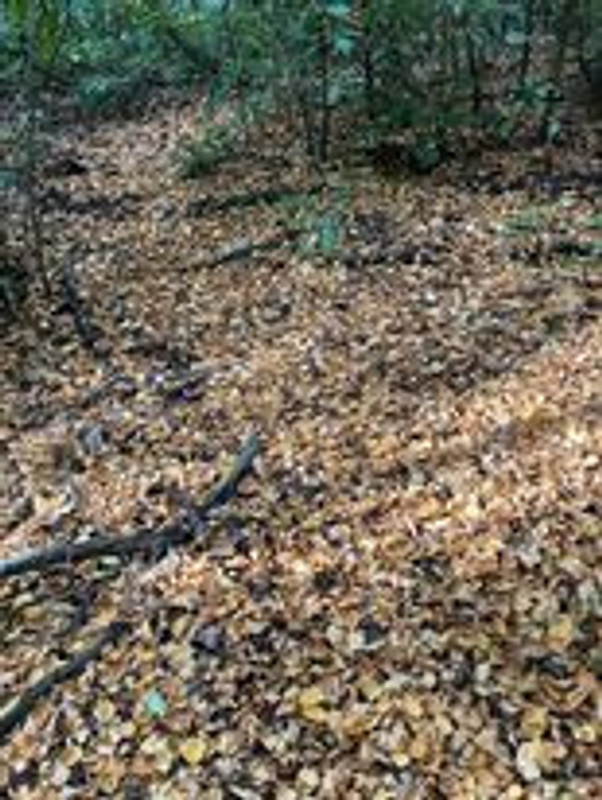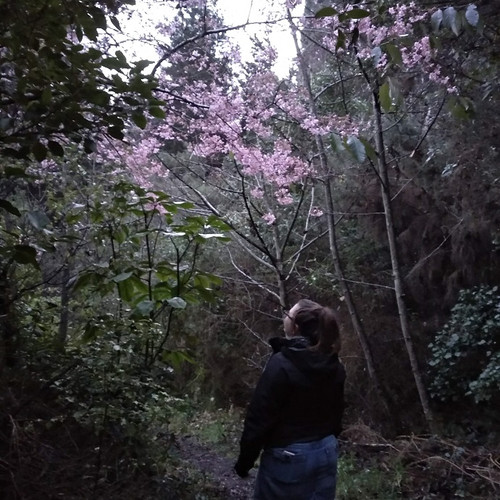Why do some trees lose their leaves in winter and others don’t?
I was looking out the window at the Valley Project office, clutching my warm cuppa tea, because it’s becoming cold now and I started thinking about what it was I was looking at. The hillside looked like a painted canvas, in amongst the background of the green forest were splotches of orange and yellow. That got me thinking, how and why do leaves change colour, why do some trees lose their leaves, and others don’t?
The name for trees that lose their leaves is “deciduous”, from the latin, “deciduus” which means “that which falls down”. And it’s not just that they lose their leaves (all trees lose leaves, just not all in one go), deciduous trees shed most of their leaves over a short period (1 month or less) every year. Evergreen trees on the other hand, hold onto their green leaves throughout the year, with some dropping off every now and then.
In New Zealand, only 11 species of native trees are fully deciduous (losing most of their leaves in winter) mainly due to the fairly mild winters we get here, compared to cold, harsh winters in the Northern hemisphere. It turns out, deciduous trees lose their leaves to help conserve energy over winter, prevent them from drying out and allow wind to blow through the trees especially when there are strong gales! Since New Zealand winters are fairly warm compared to the Northern Hemisphere, most of the native trees here are evergreen.
So most of the deciduous trees in New Zealand will likely be native to somewhere in the Northern Hemisphere and imports into New Zealand. But, one of my favourite tree species, the tree fuschia, is one of the 11 decidious New Zealand natives. In Māori, it is called, Kōtukutuku, referencing the letting go (tukutuku) of it's leaves in winter.
I was still wondering though, why do leaves on deciduous trees change colour and how do trees drop their leaves?
Most of the time, leaves are green due to the presence of a chemical called chlorophyll. Chlorophyll absorbs sunlight, enabling plants to turn that sunlight into energy. Being green, chlorophyll can absorb more light than if it was a different colour, increasing the amount of energy trees can make. Trees then store this energy, so by the time winter comes around, if deciduous, they can drop their leaves and get the benefits mentioned above of having no leaves.
As the amount of sunlight decreases with shorter days as we near winter, the level of chlorophyll in leaves also decreases. As the levels of chlorophyll decrease, leaves start to turn yellow, due to the presence of pigments called carotenes. Carotenes are always in leaves, the green of chlorophyll usually masks their colour. These pigments are also responsible for the orange colour of carrots for example. Leaves can then turn more pink or red if exposed to drier conditions and bright direct sunlight. Bright sunlight causes the synthesis of pigments called anthocyanins, commonly found in red or purple fruits and veges, like aubergine, red grapes and red cabbage. So maybe that’s why in Dunedin, we see more orange and yellow leaves as the climate is more humid, compared to central Otago where the climate is more arid, and leaves are much more bright orange and red.
Ok, so how do the leaves actually drop off?
When leaves grow out from a branch in spring, a layer of cells called the abscission layer forms between the leaf and the branch. Most of the year, energy can move through this layer, but as days shorten and temperatures cool, a hormone called auxin is reduced. The abscission layer weakens and eventually so much that the wind blows the leaf right off the tree.
Leaves are then devoured by the many organisms and microorganisms on the ground, putting carbon back into the soil. Since many of the New Zealand tree species have adapted to an environment without leaves falling every winter, oftentimes, any seedlings growing in areas dominated by deciduous trees (such as sycamore) can be smothered by the fallen leaves and not get enough sunlight to grow. They might not be such a great addition to our natural areas, but in the garden, leaves are great for the compost and putting nutrients back into the soil.







